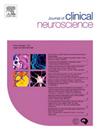Non contiguous dual level spinal injuries – A tertiary care centre institutional experience
IF 1.9
4区 医学
Q3 CLINICAL NEUROLOGY
引用次数: 0
Abstract
Background
Non-contiguous Dual level spine injuries (NDSI) are not uncommon in cases of high energy trauma and can carry very high morbidity if not recognized and treated. There is lack of literature and proper guidelines on such injuries.
Aim
In this study, we plan to understand the demographics, clinical characteristics, management, outcome and prognosis of NDSI in patients presenting to our tertiary care trauma centre from 2015 to 2024.
Materials and methods
We retrospectively reviewed the online and offline database of AIIMS to search for cases of NDSI. Total of 38 patients were found whose data were studied.
Statistical analysis
SPSS version 23 was used to carry out statistical analysis.
Results
3.01% of total patients with spine injury had NDSI.
28 patients (73.7 %) were male while 10 patients (26.3 %) female. Mean age of patients was 37.86 years (range – 16 years – 60 years).
Out of 38 patients, 22 patients (57.9 percent) had history of Fall from height and 16 patients (42 percent) had history of Road traffic accident (High velocity).
Most common injury pattern was Cervicothoracic (15 patients, 39.5 %) followed by thoracolumbar (13 patients, 34.2 %), cervicocervical (4 patients, 10%), cervicolumbar (2 patient, 5.3 %). Associated injuries included head injury finding in 5 patients, chest injuries in 15, extremity injuries in 7 and abdominal injuries in 2.
Out of 38, 30 patients had total of 2 noncontigous segment involvement, 6 had 3 and 2 had 4 non-contiguous segment involvement. Out of 38, 16 patients were managed with fixation aimed at 1 segment, whereas 21 patients required fixation of both the non-contiguous segments.
Surgical management of unstable cervical, thoracic, and lumbar fractures involved stabilization through spinal fusion, decompression to relieve pressure on neural elements, and instrumentation with screws, rods, or plates. Procedures done included Anterior odontoid screw for odontoid fracture, ACDF (Anterior cervical discectomy and fusion), ACCF (Anterior cervical corpectomy and fusion), posterior LMSRF (Lateral mass screw rod fixation) for cervical fractures, and posterior decompression and pedicle screw fixation for unstable thoracic and lumbar fractures. Minor injuries and stable compression fractures were managed conservatively. The approach depends on fracture type, location, clinical neurology of patient, finally aiming to restore alignment, stabilize the spine, and prevent neurological deficits.
At admission, 13 patients (34%) were ASIA A, 4 ASIA B(10.5%), 6 ASIA C(15.8%), 5 ASIA D (13.2%) and 10 ASIA E(26.3%).
10 patients required tracheostomy. 4 patients developed pneumonia during their hospital course. 36 patients were discharged, but 2 patients died due to associated sepsis, dyselectrolytemia, pneumonia.
Out of 38 patients, 4 patients showed improvement in neurological deficit postoperatively. One patient improved from ASIA C to ASIA D and one from ASIA A to ASIA B, 2 patients improved from ASIA D to ASIA E.
2 patients deteriorated and died due to associated sepsis, dyselectrolytemia, pneumonia.
Conclusions
Non-contiguous Dual spine injuries pose unique challenges, unstable segment need to be fixed before, while taking into account the neurology of the patient. Lengthy and complex procedures can be staged. Early fixation and mobilization is best for the patients with intact or partially intact neurology.
非连续性双水平脊柱损伤 - 一家三级医疗中心的机构经验
本文章由计算机程序翻译,如有差异,请以英文原文为准。
求助全文
约1分钟内获得全文
求助全文
来源期刊

Journal of Clinical Neuroscience
医学-临床神经学
CiteScore
4.50
自引率
0.00%
发文量
402
审稿时长
40 days
期刊介绍:
This International journal, Journal of Clinical Neuroscience, publishes articles on clinical neurosurgery and neurology and the related neurosciences such as neuro-pathology, neuro-radiology, neuro-ophthalmology and neuro-physiology.
The journal has a broad International perspective, and emphasises the advances occurring in Asia, the Pacific Rim region, Europe and North America. The Journal acts as a focus for publication of major clinical and laboratory research, as well as publishing solicited manuscripts on specific subjects from experts, case reports and other information of interest to clinicians working in the clinical neurosciences.
 求助内容:
求助内容: 应助结果提醒方式:
应助结果提醒方式:


